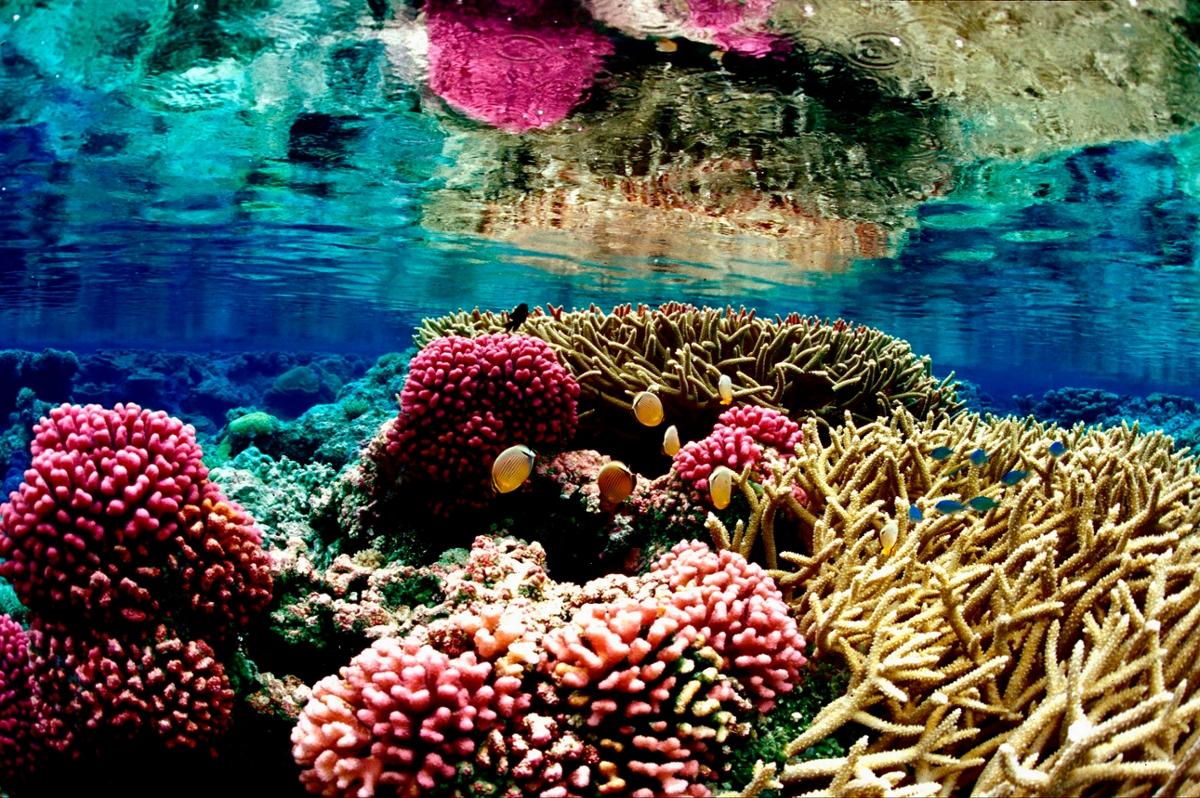A coral reef in daytime brims with rainbow hues and flashy patterns. Take a nighttime swim at the same reef, however, and all those colors look washed-out in the moonlight. The world has gone gray—to your human eyes, at least. But take a look through the eyes a moray eel, and suddenly the reef glows.
As blue light penetrates the ocean’s waters, it reflects off surfaces such as coral or a fish’s body. Humans can’t see this reflected light, but many marine organisms—such as certain species of eel, turtles, fish, and sharks—can, thanks to special apparatus in their eyes. What do these apparatus allow them to notice? Like partygoers at a rave under blacklight, they see the darkness illuminated by the neon radiance of other animal attendees.
This radiance under blue light is called biofluorescence, and it turns out that quite a few sea creatures have it. Intricate patterns of glowing green, red, or orange grace the bodies of everything from tiny reef fish to large swell sharks. And plenty of the animals, such as the hawksbill sea turtle or pygmy seahorse, sport these colors in vivid combinations. With such raucous, in-your-face colorations, biofluorescence turns a dull reef into a permanent party.
Of course, the ability to fluoresce, and the ability to see biofluorescence, are useful for more than just partying. Biologists speculate that biofluorescence can lure prey, attract mates, warn off predators, or provide camouflage. It can even allow creatures of the same species to recognize one another. A new field of study, biofluorescence could offer benefits for everything from marine conservation to biomedical research.









